KJ\'s Super 83 Question Bank FR PDF

| Title | KJ\'s Super 83 Question Bank FR |
|---|---|
| Course | Financial Reporting |
| Institution | Institute of Chartered Accountants of India |
| Pages | 119 |
| File Size | 5.5 MB |
| File Type | |
| Total Downloads | 44 |
| Total Views | 155 |
Summary
Revision Questions...
Description
KJ’s Super 83 Question Bank for CA Final Financial Reporting (New) November 2020 Examination Compiled by: CA. Kartik Jindal (AIR-9 CA Final)
Faculty Financial Reporting Contact Info: Email: [email protected] Phone: 8708187196
About the Author
CA. Kartik Jindal is an Associate Member of ICAI. He Has secured an All India Rank – 9 in CA Final. He Has secured 83 Marks in Financial Reporting (New). He Has Contributed in Comprehensive book on Ind AS “Treatise on Ind AS” authorised by CA. Alok K. Garg. He has completed graduation in BBA from Hisar. He has Vast Experience in the field of Statutory Audit of various listed and unlisted companies. He has delivered sessions on Ind AS and IFRS on Various Platforms of Universities and forums. He is Passionate about Mentoring CA Students for Exam Preparation.
Overview of Question Bank Hello Friends, hope you are doing well This question bank is Prepared for students to score wonders in the Examination. After doing many analysis and research with Study Material , MTP’s , RTP’s and Past years Papers (New scheme). Most Expected 83 Questions are compiled. The question number wise analysis is provided of Previous year RTP , MTP , Papers. I am sure that you will definitely love this Super 83 Question Bank All the best for Examination.
For any queries feel free to contact me. Thanks & Regards CA. Kartik Jindal
KJ’s Super 83 Question Bank for November 2020 Examination [email protected]
Love FR with Kartik
Analysis of Questions asked in RTPs CA Final – FR (New) By CA. Kartik Question No
May 2018
NOV 2018
May 2019
Nov 2019
May 2020
Name of Related Standard or Chapter 1. 2.
AS 28* Ind AS 109
3.
Ind AS 10
4.
Ind AS 23
5. 6. 7. 8.
Ind AS 11* Ind AS 2 Ind AS 105 Ind AS 1
9. 10.
Ind AS 7 Ind AS 110
11.
Ind AS 21
Ind AS 21 Ind AS 23 Ind AS 102 Ind AS 115 Ind AS 10 Ind AS 1 Ind AS 110 and Ind AS 10 28 Ind AS 19 Ind AS 109 Ind AS 19 Ind AS 16 & Ind AS 38 Ind AS 110 37 Ind AS 41 Ind AS 101 Ind AS 21
12.
Ind AS 12
Ind AS 23
Ind AS 105
13. 14.
Ind AS 16
Ind AS 16 Ind AS 103
Ind AS 8 Ind AS 19
Ind AS 38 & 36 Ind AS 115 & Ind AS 19 17 Ind AS 113 Ind AS 20 Ind AS 101 Ind AS 110
Ind AS 36
CSR
Ind AS 24
AS 21, 23 * Ind AS 111 Ind AS 109
Ind AS 33
Ind AS 7
Ind AS 109 and 33 Ind AS 8
Ind AS 7
Ind AS 36 Ind AS 37
Ind AS 21 Ind AS 115
Ind AS 12
Ind AS 102
15. 16. 17. 18.
Ind AS 18* Ind AS 101 Ind AS 17* Ind AS 33 Ind AS 24
Ind AS 24 Ind AS 17* Analysis of Multiple Ind AS Ind AS 16, 40 Ind AS 103 Ind AS 12 Ind AS 38 Ind AS 21
19.
Analysis of Ind AS 102 Financial Statements
20.
Value added Ind AS 37 statement*
Ind AS 36 Ind AS 12
Ind AS 34 Ind AS 8
Ind AS 2 Ind AS 7
Ind AS 103
Ind AS 102
Ind AS 10 and 37
Ind AS 115
Ind AS 109
Ind AS 16
Ind AS 17* Ind AS 16
Ind AS 108
Ind AS 28 Ind AS 37 Ind AS 108 Ind AS 111 Ind AS 36 Ind AS 32
Ind AS 110 & Ind AS 101 103
* This Particular Topics is not Part of syllabus (ICAI Notification Dated 24th June, 2019)
Target 83+ Marks in FR 1|P ag e
Believe yourself
Phone: 8708187196
Don’t Compare with Others CA.KARTIK JINDAL
KJ’s Super 83 Question Bank for November 2020 Examination [email protected]
Love FR with Kartik
Analysis of Questions asked in MTPs CA Final – FR (New) By CA. Kartik Question No.
March ,18
April , 18
Aug , 18
Oct , 18
March ,19
April, 19
Oct , 19
May , 20
Name of Related Standard or Chapter 1 (a)
1 (b) 2 (a)
Analysis of Financial Statement Ind AS 1
Analysis of Financial Statement Ind AS 101 AS 21 , Ind AS 103 23*
2 (b)
FrameInd AS 7 work of Ind AS
2 (c) 3 (a)
-----------Ind AS 1
3 (b)
Ind AS Ind AS 24 18* or Ind AS 12 Ind AS 16 ------------
3 (c) 3 (d) 4 (a)
4 (b)
4 (c)
5 (a)
-----------Ind AS 16
Analysis Ind AS Ind AS of 103 110 & 103 Financial Statement Ind AS 24 ------------ ------------Ind AS Analysis Ind AS 16 110 of Financial Statement Guidance Ind AS Ind AS 12 109 notes * -----------Ind AS 20
Ind AS 113 or Ind AS 12 Ind AS 16
------------ -----------Ind AS Ind AS 28 103
AS Ind AS Ind 109 & 21 109
Target 83+ Marks in FR 2|P ag e
AS Ind 101
-----------Ind 17*
AS Ind 109
AS Ind AS 16
Ind AS 28
AS Ind AS 19
Analysis of Financial Statement Ind AS 8 --------------------Ind AS Ind AS Ind AS 102 110 or Ind 17* AS 28 Ind AS 36 Ind AS Ind AS 23 or Ind AS 109 101 Ind AS 2 Ind AS 28 Ind AS 115 ------------ ------------ -----------Ind AS AS 15* Ind AS 102 18*
-----------Ind AS 103 and 12 Value - AS 15* Value Ind AS added added 17* statement statement s* s* ----------Ind AS 36 ------------ ----------or Ind AS 105 Ind 109
Ind 103
Ind AS 38 Ind AS 33 or InteReporting
Ind 103
Ind AS 103 Ind AS 8
AS Ind 109
AS
---------Ind AS 19 Ind AS Ind AS 7 108 Ind 17*
AS Ind 102
AS
Ind AS 110 Ind AS 33 Ind AS 115
------------
Ind AS 7
Ind AS 32
------------Ind AS 116
Value - ------------------------------added statement s* AS Analysis Ind AS Ind AS Ind AS of 109 109 110
Believe yourself
Phone: 8708187196
Don’t Compare with Others CA.KARTIK JINDAL
KJ’s Super 83 Question Bank for November 2020 Examination [email protected]
Love FR with Kartik
5 (b)
InteCSR Reporting
CSR
Human Resource
Financial Statement Ind AS Ind AS 12 102
Ind AS 16
Ind 115
AS
* 5 (c) 6 (a)
------------ -----------------------------Ind AS 37 ----------Ind AS Ind AS Ind AS Ind AS Ind AS CSR 102 102 102 110 115
6 (b)
Ind 108
6 (c)
-----------
6 (d)
-----------
AS Human Resource
Ind AS 36
Ind AS 19
Ind 109
AS AS 28*
----------
-----------
----------
Ind AS 24
---------
-----------
-----------
-----------
-----------
-----------
-----------------Ind AS 36 Ind AS 19 or Ind AS 41 CSR Ind AS 115
* Ind AS Ind AS 109 115 ----------Ind AS 33 or CSR
* This Particular Topics is not Part of syllabus (ICAI Notification Dated 24 th June, 2019)
Target 83+ Marks in FR 3|P ag e
Believe yourself
Phone: 8708187196
Don’t Compare with Others CA.KARTIK JINDAL
KJ’s Super 83 Question Bank for November 2020 Examination [email protected]
Love FR with Kartik
Analysis of Questions asked in Previous Year Exams CA Final – FR (New) By CA. Kartik Question No.
May 2018
Nov 2018
May 2019
Nov 2019
Name of Related Standard or Chapter 1 (a)
Ind AS 103
Ind AS 110
Analysis of Ind AS 103 Financial Statement
1 (b)
Ind AS 104 *
Ind AS 37
Ind AS 1
2 (a)
Ind AS 103
Ind AS 36
Ind AS 110
2 (b)
Ind AS 108
Ind AS 20
Ind AS 105
2 (c) 3 (a)
-----------Ind AS 109
Ind AS 18* Ind AS 16
Framework of Ind AS -----------Ind AS 115
3 (b) 3 (c) 3 (d) 4 (a)
Ind AS 109
Ind AS 102 Ind AS 109 -----------AS 28*
Ind AS 38 Ind AS 21 Ind AS 19 Ind AS 103
Ind AS 23 Ind AS 21 -----------Ind AS 115
4 (b)
of Ind AS 113
Human Resource*
Ind AS 38
4 (c)
Analysis Financial Statement -----------
-----------
4 (d)
------------
Ind AS 34
Carbon credit* ------------
5 (a)
CSR
Ind AS 109
Ind AS 109
5 (b)
Ind AS 17*
Value added Ind AS 102 statements*
Analysis Financial Statement Ind AS 38
5 (c) 6 (a)
-----------AS 21*
CSR Ind AS 102
----------AS 21 , 23 *
----------Ind AS 10
6 (b)
E-commerce*
Ind AS 109
Ind AS 20
Ind AS 113
Carbon credit* -----------Ind AS 102
Target 83+ Marks in FR 4|P ag e
Ind AS 11*
Believe yourself
Phone: 8708187196
Analysis Financial Statement Ind AS 109
of
--------------Ind AS 102
--------------of
Don’t Compare with Others CA.KARTIK JINDAL
KJ’s Super 83 Question Bank for November 2020 Examination [email protected]
Love FR with Kartik 6 (c)
Ind AS 34 or Ind AS 109 or Ind AS 18* or Human Ind AS 101 Ind AS 2 Resource* or AS 28* Ind AS 103
* This Particular Topics is not Part of syllabus (ICAI Notification Dated 24th June, 2019)
Target 83+ Marks in FR 5|P ag e
Believe yourself
Phone: 8708187196
Don’t Compare with Others CA.KARTIK JINDAL
KJ’s Super 83 Question Bank for November 2020 Examination [email protected]
Love FR with Kartik
Ind AS 1 Question 1: In December 2XX1 an entity entered into a loan agreement with a bank. The loan is repayable in three equal annual instalments starting from December 2XX5. One of the loan covenants is that an amount equivalent to the loan amount should be contributed by promoters by March 24 2XX2, failing which the loan becomes payable on demand. As on March 24, 2XX2, the entity has not been able to get the promoter’s contribution. On March 25, 2XX2, the entity approached the bank and obtained a grace period upto June 30, 2XX2 to get the promoter’s contribution. The bank cannot demand immediate repayment during the grace period. The annual reporting period of the entity ends on March 31. (a) As on March 31, 2XX2, how should the entity classify the loan? (b) Assume that in anticipation that it may not be able to get the promoter’s contribution by due date, in February 2XX2, the entity approached the bank and got the compliance date extended upto June 30, 2XX2 for getting promoter’s contribution. In this case will the loan classification as on March 31, 2XX2 be different from (a) above? Solution: (a) Ind AS 1, inter alia, provides, “An entity classifies the liability as non-current if the lender agreed by the end of the reporting period to provide a period of grace ending at least twelve months after the reporting period, within which the entity can rectify the breach and during which the lender cannot demand immediate repayment.” In the present case, following the default, grace period within which an entity can rectify the breach is less than twelve months after the reporting period. Hence as on March 31, 2XX2, the loan will be classified as current. (b) Ind AS 1 deals with classification of liability as current or non-current in case of breach of a loan covenant and does not deal with the classification in case of expectation of breach. In this case, whether actual breach has taken place or not is to be assessed on June 30, 2XX2, i.e., after the reporting date. Consequently, in the absence of actual breach of the loan covenant as on March 31, 2XX2, the loan will retain its classification as noncurrent. Question 2: An entity has taken a loan facility from a bank that is to be repaid within a period of 9 months from the end of the reporting period. Prior to the end of the reporting period, the entity and the bank enter into an arrangement, whereby the existing outstanding loan will, unconditionally, roll into the new facility which expires after a period of 5 years. (a) How should such loan be classified in the balance sheet of the entity? (b) Will the answer be different if the new facility is agreed upon after the end of the reporting period?
Target 83+ Marks in FR 6|P ag e
Believe yourself
Phone: 8708187196
Don’t Compare with Others CA.KARTIK JINDAL
KJ’s Super 83 Question Bank for November 2020 Examination [email protected]
Love FR with Kartik
(c) Will the answer to (a) be different if the existing facility is from one bank and the new facility is from another bank? (d) Will the answer to (a) be different if the new facility is not yet tied up with the existing bank, but the entity has the potential to refinance the obligation? Solution: (a) The loan is not due for payment at the end of the reporting period. The entity and the bank have agreed for the said roll over prior to the end of the reporting period for a period of 5 years. Since the entity has an unconditional right to defer the settlement of the liability for at least twelve months after the reporting period, the loan should be classified as non-current. (b) Yes, the answer will be different if the arrangement for roll over is agreed upon after the end of the reporting period, since assessment is required to be made based on terms of the existing loan facility. As at the end of the reporting period, the entity does not have an unconditional right to defer settlement of the liability for at least twelve months after the reporting period. Hence the loan is to be classified as current. (c) Yes, loan facility arranged with new bank cannot be treated as refinancing, as the loan with the earlier bank would have to be settled which may coincide with loan facility arranged with a new bank. In this case, loan has to be repaid within a period of 9 months from the end of the reporting period, therefore, it will be classified as current liability. (d) Yes, the answer will be different and the loan should be classified as current. This is because, as per paragraph 73 of Ind AS 1, when refinancing or rolling over the obligation is not at the discretion of the entity (for example, there is no arrangement for refinancing), the entity does not consider the potential to refinance the obligation and classifies the obligation as current.
Target 83+ Marks in FR 7|P ag e
Believe yourself
Phone: 8708187196
Don’t Compare with Others CA.KARTIK JINDAL
KJ’s Super 83 Question Bank for November 2020 Examination [email protected]
Love FR with Kartik
Ind AS 2 Question 3: In a manufacturing process of Mars ltd, one by-product BP emerges besides two main products MP1 and MP2 apart from scrap. Details of cost of production process are here under: Item
Unit
Amount
Output
Closing Stock 313-20X1 1-5,000 250
Raw material
14,500
1,50,000
Wages
-----------
90,000
Fixed overhead ----------Variable ----------overhead
65,000 50,000
MP units MP II - 4,000 100 units BP- 2,000 units
Average market price of MP1 and MP2 is Rs. 60 per unit and Rs. 50 per unit respectively, by- product is sold @ Rs.20 per unit. There is a profit of Rs. 5,000 on sale of by-product after incurring separate processing charges of Rs. 8,000 and packing charges of Rs.2,000, Rs. 5,000 was realised from sale of scrap. Required: Calculate the value of closing stock of MP1 and MP2 as on 31-03-20X1 Solution: As per Ind AS 2 ‘Inventories’, most by-products as well as scrap or waste materials, by their nature, are immaterial. They are often measured at net realizable value and this value is deducted from the cost of the main product. 1) Calculation of NRV of By-product BP Selling price of by-product 2,000 units x 20 per unit Less: Separate processing charges of byproduct BP Packing charges Net realizable value of by-product BP
40,000 (8,000) (2,000) 30,000
2) Calculation of cost of conversion for allocation between joint products MP1 and MP2 Raw material Wages Fixed overhead Variable overhead Less: NRV of by-product BP (See calculation 1) 30,000 Sale value of scrap 5,000 Joint cost to be allocated between MP1 and MP2
Target 83+ Marks in FR 8|P ag e
Believe yourself
Phone: 8708187196
1,50,000 90,000 65,000 50,000 (35,000) 3,20,000
Don’t Compare with Others CA.KARTIK JINDAL
KJ’s Super 83 Question Bank for November 2020 Examination [email protected]
Love FR with Kartik
3) Determination of “basis for allocation” and allocation of joint cost to MP1 and MP2 Output in units (a) Sales price per unit (b) Sales value (a x b) Ratio of allocation Joint cost of Rs 3,20,000 allocated in the ratio of 3:2 (c) Cost per unit [c/a]
MP I 5,000 60 3,00,000 3 1,92,000 38.4
MP 2 4,000 50 2,00,000 2 1,28,000 32
4) Determination of value of closing stock of MP1 and MP2 Particulars Closing stock in units Cost per unit Value of closing stock
MP I 250 units 38.4 9,600
MP 2 100 units 32 3,200
Question 4: UA Ltd. purchased raw material @ Rs.400 per kg. Company does not sell raw material but uses in production of finished goods. The finished goods in which raw material is used are expected to be sold at below cost. At the end of the accounting year, company is having 10,000 kg of raw material in inventory. As the company never sells the raw material, it does not know the selling price of raw material and hence cannot calculate the realizable value of the raw material for valuation of inventories at the end of the year. However, replacement cost of raw material is Rs.300 per kg. How will you value the inventory of raw material? Solution: As per Ind AS 2 “Inventories”, materials and other supplies held for use in the production of inventories are not written down below cost if the finished products in which they will be incorporated are expected to be sold at or above cost. However, when there has been a decline in the price of materials and it is estimated that the cost of the finished products will exceed net realizable value, the materials are written down to net realizable value. In such circumstances, the replacement cost of the materials may be the best available measure of their net realizable value. Therefore, in this case, UA Ltd. will value the inventory of raw material at Rs. 30,00,000 (10,000 kg. @ Rs. 300 per kg.). Question 5: The following is relevant information for an entity : • Full capacity is 10,000 labour hours in a year. • Normal capacity is 7,500 labour hours in a year. • Actual labour hours for current period are 6,500 hours. • Total fixed production overhead is Rs. 1,500.
Target 83+ Marks in FR 9|P ag e
Similar Free PDFs

KJ\'s Super 83 Question Bank FR
- 119 Pages

Super question
- 5 Pages

Dmdw-question bank - question bank
- 17 Pages

Question bank
- 8 Pages
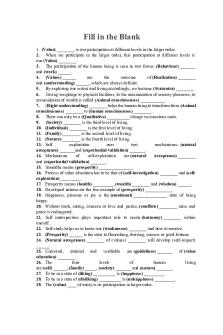
Question Bank 3question bank
- 6 Pages

Question BANK
- 19 Pages
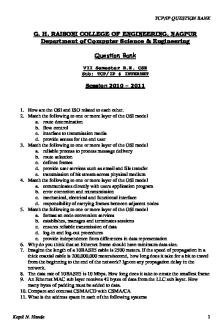
Tcp-ip-question-bank
- 25 Pages

Chapter 4 - Question Bank
- 28 Pages

DIP Question Bank Sheetal
- 14 Pages
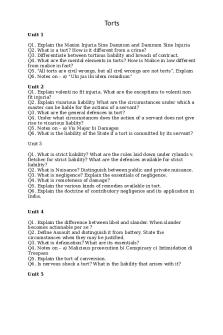
Torts Question Bank
- 2 Pages
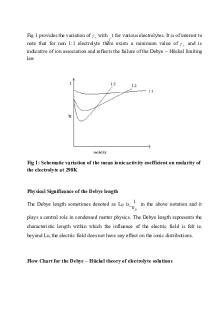
QB5 - Question Bank 5
- 104 Pages

Assessment Question Bank 1
- 22 Pages
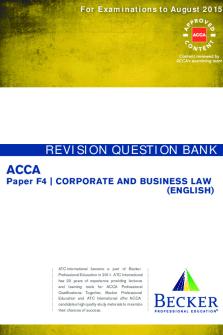
Revision Question Bank 60
- 154 Pages
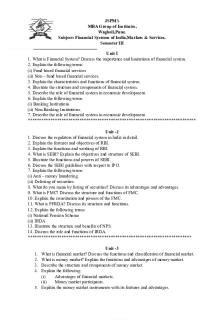
Fsims Question Bank
- 4 Pages

11. Autocad question bank
- 14 Pages
Popular Institutions
- Tinajero National High School - Annex
- Politeknik Caltex Riau
- Yokohama City University
- SGT University
- University of Al-Qadisiyah
- Divine Word College of Vigan
- Techniek College Rotterdam
- Universidade de Santiago
- Universiti Teknologi MARA Cawangan Johor Kampus Pasir Gudang
- Poltekkes Kemenkes Yogyakarta
- Baguio City National High School
- Colegio san marcos
- preparatoria uno
- Centro de Bachillerato Tecnológico Industrial y de Servicios No. 107
- Dalian Maritime University
- Quang Trung Secondary School
- Colegio Tecnológico en Informática
- Corporación Regional de Educación Superior
- Grupo CEDVA
- Dar Al Uloom University
- Centro de Estudios Preuniversitarios de la Universidad Nacional de Ingeniería
- 上智大学
- Aakash International School, Nuna Majara
- San Felipe Neri Catholic School
- Kang Chiao International School - New Taipei City
- Misamis Occidental National High School
- Institución Educativa Escuela Normal Juan Ladrilleros
- Kolehiyo ng Pantukan
- Batanes State College
- Instituto Continental
- Sekolah Menengah Kejuruan Kesehatan Kaltara (Tarakan)
- Colegio de La Inmaculada Concepcion - Cebu
